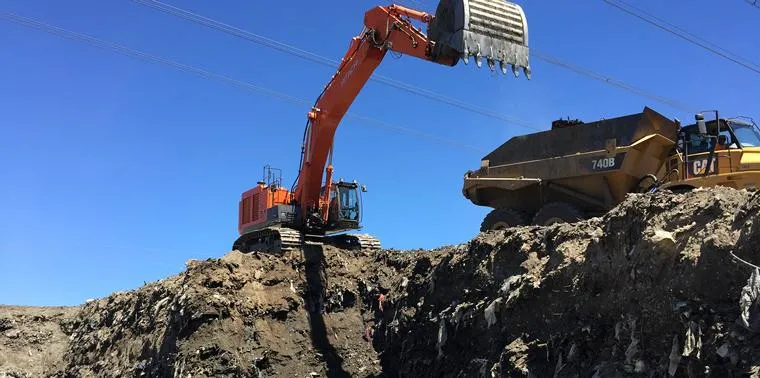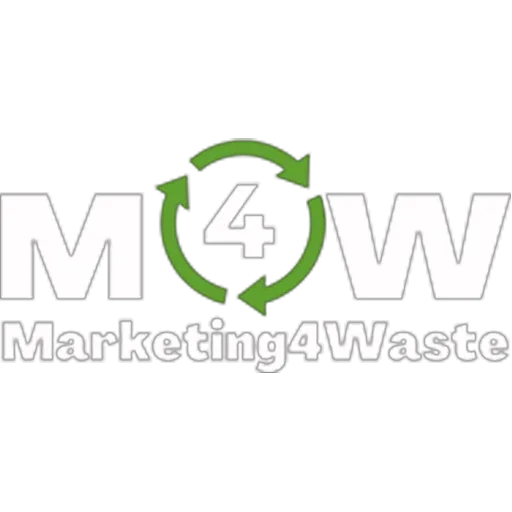Increase the Revenues of Your Waste Company With the Tips Shared in Our Blog Articles

Why Landfill Mining Is the Fastest Way to Build a Raw Material Empire in Today’s Broken Supply Chain
Let me start with something uncomfortable.
For decades, America’s waste industry has done a stellar job at one thing: burying value.
Yes, we’ve buried copper, aluminum, steel, rare earths, and even gold—and we’ve done it faithfully, layer after layer, decade after decade. What we’ve created beneath our cities and counties isn’t a problem to clean up… it's a strategic raw material stockpile, quietly compounding in value while the world panics about scarcity.
And yet, here we are—still importing what we’ve already buried.
That’s the paradox. While bureaucrats debate trade deals and manufacturers scramble to source rare materials from politically hostile regions, we’re sitting on billions—literally billions—of dollars' worth of materials in our closed landfills. And no one’s touching them.
Except for a few forward-thinking operators. The ones I call Waste Management Alchemists—those transforming yesterday’s trash into today’s most bankable assets.
Now, if you're in the waste business, recycling, demolition, logistics—or you're just tired of being at the mercy of volatile supply chains—what I’m about to reveal could change the entire trajectory of your business.
Let me unpack it.
The U.S. Is Sitting on a Strategic Reserve Nobody’s Tapping
Here’s the truth nobody wants to admit:
The U.S. doesn’t need to rely on China, the Congo, or unstable Middle Eastern mines to feed our hunger for copper, lithium, nickel, aluminum, or rare earths.
We’ve already imported them.
They came disguised as toasters, computers, air conditioners, VCRs, HVAC units, washing machines, and wind turbine prototypes. And when they broke? We threw them in the dump.
And here’s what the average landfill now contains per million tons of waste:
80,000 tons of ferrous metals
15,000 tons of aluminum
4,000 tons of copper
100 tons of rare earths & precious metals
And truckloads of forgotten industrial materials, wires, brass, batteries, and boards
Do the math, and it’s easy to see:
👉 That’s $100 million+ of potential sales value buried in a landfill of just 1 million tons.
Now multiply that by the 1,250+ closed landfills across the U.S.
We’re not talking about waste anymore.
We’re talking about a national material reserve worth tens of billions, right under our boots.
The Supply Chain Crisis Made Landfills Valuable Again
Since 2018, U.S. companies have been slapped with tariffs up to 145% on imported copper, aluminum, and steelThe US-China Tariff War…. And China’s not playing soft either—retaliating with its own restrictions and locking down exports of critical minerals like gallium, germanium, and rare earthsCommodities and Geopoli….
At the same time, global demand for electric vehicles, renewable infrastructure, semiconductors, and defense tech is spiking—making strategic materials more valuable than ever.
So what happens when global supply gets squeezed?
Manufacturers don’t wait. They pay premiums for local supply.
And guess what?
That’s when the smart operators who already mined, sorted, and refined their local landfill metals are the ones getting the contracts, locking in deals with smelters, and becoming suppliers—not collectors.
Forget “Sustainability.” This Is a Business Play.
You won’t hear me preach about sustainability or saving the planet. That’s not why I’m writing this.
I’m writing this because this is the most underutilized, underpriced business opportunity in the modern American economy—and 98% of waste company owners still haven’t acted on it.
Let’s break down the margins.
A Standard 1M Ton Landfill:
Gross Sales: $100M+
Operating Costs: $60M (excavation, sorting, logistics, permits)
Net Profit: $40M
ROI: 67%
Timeframe: 18–24 months
And that’s not even factoring in carbon credits, brownfield remediation subsidies, or long-term lease-back deals you can set up for the same land once it’s cleared.
Translation: You make money from the metals, from the cleanup, and from the land.
Why You Need a Strategic Model—Not a Million-Dollar Plant
Here’s the kicker: You don’t need to build a smelter. You don’t need millions in capital equipment.
You need a model.
That’s what I help companies implement with what I call the SAM Method:
Strategic Extraction – Using borehole analytics to map where the valuable layers sit in the landfill
Accountable Recovery – Building a smart material flow (think: magnets, screeners, crushers, not incinerators)
Market Activation – Pre-selling materials to buyers before you dig, securing a cash-flow-positive operation
Reintegration – Creating repeat contracts with local manufacturers and processors starving for reliable inputs
You can launch this with:
A screening plant
A magnetic separator
A network of buyers
And a clever operator’s mindset
That’s it.
This isn’t about building infrastructure. It’s about building systems—and monetizing what others call a liability.
What the Smartest Operators Are Doing Right Now
Right now, while the rest of the industry talks about compliance and landfill capping, the smartest players are:
Mapping metal-rich strata using old landfill intake logs
Partnering with smelters to secure off-take contracts
Buying brownfield sites for pennies and flipping them as urban mines
Turning their waste hauling ops into resource monetization hubs
And they’re doing it with double-digit net margins and long-term supply contracts that any traditional recycler would envy.
The Alchemist’s Final Word: This Is a Time-Sensitive Gold Rush
In five years, this will be common practice.
There will be large players who own the top 200 most profitable closed landfills in America. They’ll treat them the same way Exxon treats oil fields. And once they’re claimed? You’ll be too late.
But right now—while no one is watching—you have the chance to carve out your slice of this industrial goldmine.
If you have access to a landfill, demolition site, or even just a connection with a municipality sitting on 20+ years of buried waste… I urge you to take this seriously.
Because the most valuable metals on earth aren’t locked beneath mountains or oceans.
They’re sitting in plain sight.
In our landfills.
In your city.
Right now.
🧠 Want to Know If Your Landfill Can Be Monetized?
I’ve helped dozens of operators launch successful urban mining operations—even with minimal resources.
Book a free 20-minute strategy call now. No strings. Just clarity.
👉 https://sambarrili.com/schedule-free-20min-call
We’ll look at your site, your region, and your goals. And if it’s viable, I’ll give you the exact roadmap to turn buried trash into multi-million-dollar material flow.
Your land is your leverage. Let’s unlock it.
To Your Success,
Samuele “Sam” Barrili
The Waste Management Alchemist


© 2025 Marketing4waste - All Rights Reserved,
Marketing4Waste is a brand of MiM MarketingInterimManagers LLC
+1 801 804 5730

